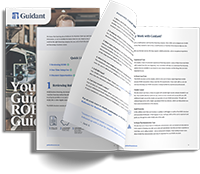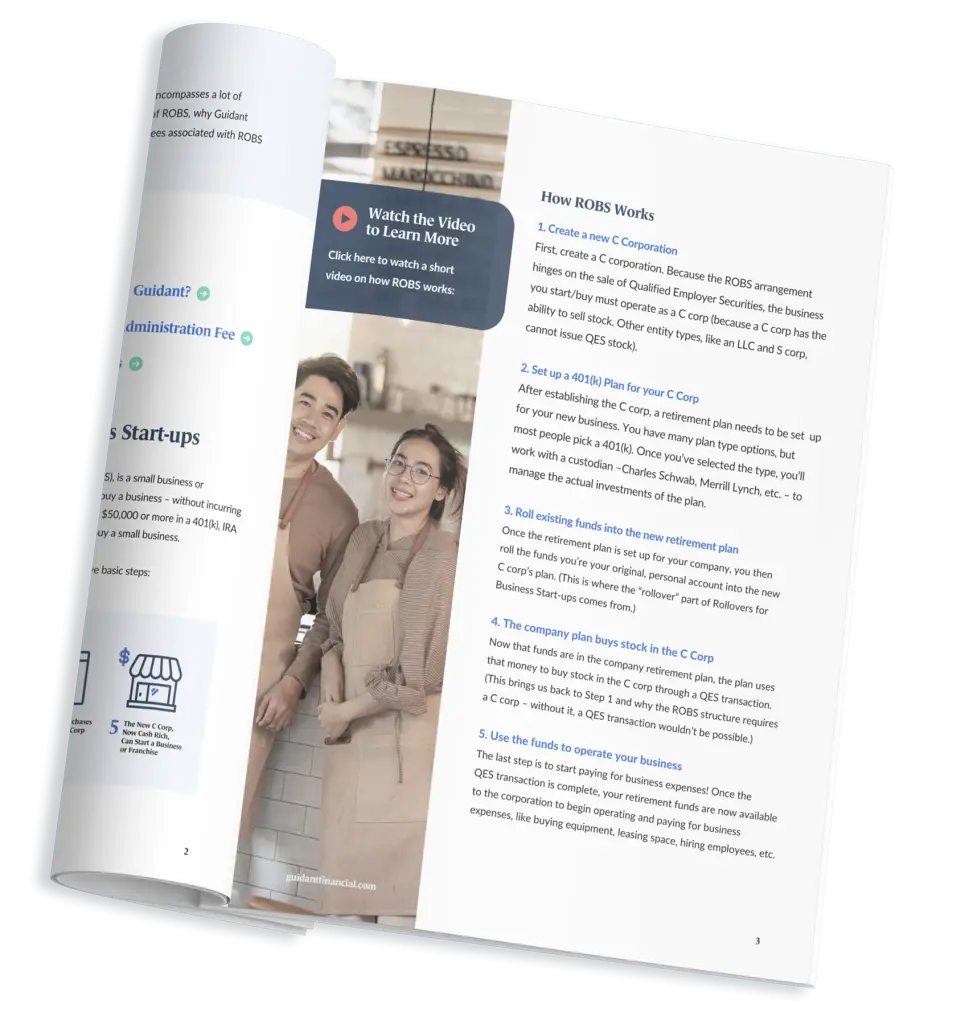2021 was bigger for jobs than many expected — even the U.S. Bureau of Labor Statistics underestimated job growth. And though 2021 was a big year for growth, small businesses are still recovering — meaning if you want to start a business, there’s no better time to become a business owner.
According to Small Business Administration Data, we’re still 7.1% away from where we were in 2018 (SBA loan numbers fell in 2019). Some industries, however, have not only recovered from the pandemic but exceeded their previous levels of growth. If you want to be your own boss, 2022 is the time to explore a business idea in one of these ten small business industries.
And trust me, you’re not the only one interested: Even before the pandemic, the 2021 Small Business Trends survey indicated the desire to be one’s own boss was the most popular reason for starting a business. People across the country of every age, income, and education level are seeking a greater sense of autonomy in their careers.
A detailed analysis of the past five years of Small Business Administration data has given us insight into industries that are growing, and industries that need more time. Believe it or not, financial institutions really are interested in funding businesses outside of artificial intelligence and the tech industry.
Remember that changes in SBA loan approvals are only one source of industry performance analysis — if you’re interested in joining an industry, get out there and talk to the people living it! Here are the top small business industries for 2022:
10. Restaurant and Food Service Industry
Compared to 2020: +13.65% Compared to 2018: -27.46%
Despite the increase in remote work, Americans are busier than ever. With both parents working in over 60 percent of U.S. families, more people working multiple jobs, and an average 47-hour work-week, home-cooked meals aren’t an option for everyone.
Fortunately, the pandemic bolstered delivery services of all kinds. In all likelihood, this saved the restaurant industry: according to data from OpenTable’s State of the Industry Report, restaurants are still not receiving pre-pandemic levels of reservations — though they have surpassed 2020 levels by far.
This “almost-but-not-quite” sentiment is echoed by SBA data: while the industry is taking 13.65% percent more healthy business loans than in was in 2020, we’re still 27.46% away from normal.

Despite this, restaurants still accounted for the majority of SBA loans by far, and generated more than 107,000 jobs — the most of any industry.
What can we say? People gotta eat.
Get a Jump Start In Restaurants:
According to a recent study by Deloitte, the key to finding and sustaining success as a restaurant owner is establishing customer loyalty. Whether your plan is to open a food truck, full-service dining, or fast-food chain, you can findsuccess just about anywhere in the U.S. if you service quality food and get creative with attracting repeat customers.
9. Janitorial Service Industry
Compared to 2020: +14.19% Compared to 2018: -15.92%
Among the many services in high demand due to a growing generation of aging and retired adults, along with increased disposable income nationwide, is in-home cleaning. And as long as our economy continues to be strong, you’re well-positioned as the owner of a home cleaning service business.
One of the easiest ways to get started is to open a franchise. IBIS reports that franchises in this industry saw 3 percent annual growth from 2012 to 2017 and, though this may slow as the industry becomes more saturated, the industry is expected to continue to grow.
Get a Jump Start in the Landscaping and Janitorial Services Industries
Startup costs for janitorial businesses are fairly low, with SBA loans sitting at an average of $265,000. Janitorial businesses are also relatively easy to start. However, the International Janitorial Cleaning Services Association warns that most janitorial businesses fail within a year of getting started for a few reasons: the inability to compete with highly-certified franchises, a lack of business knowledge, and overreliance on a single service or client, to name a few.
Be sure you have a solid understanding of your business plan and financing options before making any commitments!
8. The Freight Trucking Industry
Compared to 2020: +19.28% Compared to 2018: -15.88%
If you’re currently a truck driver, now may be the time to transition to the role of owner/operator. While the industry isn’t quite back to where it was prior to the pandemic, it’s growing.
Keep in mind that this industry includes everything from long-distance freight truckers to local moving companies. Your options are varied, but it seems like every variation has found success in the industry.

Companies need to transport raw materials, manufactured products, and ultimately distribute their goods. The pandemic and rise in remote work has led people to reconsider where they live, and ultimately increased in-country moving during 2020 and 2021. Naturally, this has been good for local freight trucking companies.
Notable is the franchise Two Men and a Truck, which not only made Business Franchise Review’s 100 Best Recession-Proof Businesses list but didn’t lose a single franchise location during the pandemic.
Freight trucking also seems to have relatively low starting costs, with SBA loan averages of only $230,000.
Get a Jump Start in the Freight Trucking Industry
Freight is a regulated industry, so besides writing a business plan, establishing your company, and renting any necessary equipment, you’ll need to obtain all the necessary business licenses and permits. These include:
- A commercial driver’s license
- A USDOT number,
- A BOC-3 filing.
- And more.
7. Landscaping Industry
Compared to 2020: +20.74% Compared to 2018: -0.61%
Landscaping and janitorial services both fall under the SBA’s “Services to Buildings and Dwellings” category. It also includes carpet cleaners and pest exterminators. Together, these industries added more than 20,786 jobs to the economy in 2021.

Landscaping, in particular, makes up over 50% of the Services to Buildings and Dwellings category. There are likely many more businesses not accounted for in SBA data — you can start a lawn care business with as little as a pickup truck and a lawnmower. That makes the market crowded and the competition fierce.
Get a Jump Start in the Landscaping and Janitorial Services Industries
Landscaping also has low startup costs with SBA loans sitting at an average of $265,000. Landscaping is often attractive in particular because there are no industry licensing requirements. For more details, check out our guide on starting a landscaping or lawn care business.
6. Automotive, Repair, and Maintenance
Compared to 2020: +29.27% Compared to 2018: -8.69%
Automotive repair is on the fast track to recovery. Having grown nearly 30% compared to numbers in 2020 and exceeding the number of locations in 2018, the automotive, repair, and maintenance industry is on the rise. According to an IBISWorld report, auto maintenance and repair franchises have grown 3.3 percent over the last five years, comprising an $8.1 billion industry.

And several factors are contributing to this economy-proof industry’s growth: Cars are now built better and living longer, which means rather than buying a new car, people are taking their cars in for regular maintenance. Other popular services in this industry include oil and lubrication, transmission work, and mechanical repair.
Get a Jump Start in the Automotive, Repair, and Maintenance Industry
Because of the brick-and-mortar nature of these businesses, startup costs in the auto repair industry can run higher than average ($640,000 on average with a median of $300,000). Take the time to understand your financing options before locking down your dream automotive business.
5. Insurance Agencies and Brokerages
Compared to 2020: +23.00% Compared to 2018: +16.85%
2020 was a challenging year for insurance. Insurers in the property-casualty vertical, including those in workers’ compensation and event cancellation, were especially taken off guard.
That aside, IBISWorld reports that revenue grew an estimated 4.7% over the course of 2020 and 2021, largely due to increased demand in the housing, health insurance, and auto markets. This mirrors the positive trend in SBA loans during this time, an increase of 16.85% since 2018.

Franchises like Farmers Insurance appear to have aggressively expanded during 2021, with 13 new agent appointments recorded by the SBA.
The industry is also evolving. The new focus on data and business ethics has led to Avant-guard, online-only insurance businesses entering the market, such as Embroker and Lemonade. They both tout business models that defy tradition. How do you plan to compete with their contemporary take on an ancient industry?
Get a Jump Start in the Insurance Agencies and Brokerages Industry
If you’re interested in starting an insurance agency or brokerage, you’ll need to start by obtaining an insurance education and the associated licenses. Most states require a certain number of hours of insurance and ethics education before you can even take the exam. When you’re calculating startup costs, be sure to include the costs of these courses, which can be as expensive as $500 USD per course.
As with many industries, you also need to determine the niche of your new insurance company. Most insurance companies offer related types of insurance, such as life and health insurance versus home and auto insurance.
4. Hospitality Industry (Hotels and Motels)
Compared to 2020: +47.12% Compared to 2018: +18.57%
It’s safe to say we all know someone who wants to retire and open a Bed and Breakfast. With younger generations looking for out-of-the-box experiences and older generations with more to spend on luxury accommodations, consumers are opting for boutique lodging experiences. IBIS reports this sect of the travel industry has seen almost 5 percent growth over the last five years and is expected to continue performing well.

Even if becoming the purveyor of a quaint inn isn’t in your future, the hospitality industry has room for growth and innovation in terms of technology, food, wellness, and more. This is an industry in which originality will be rewarded.
Get a Jump Start in the Hospitality Industry
Niche is everything in traveler accommodations. You’ve got to decide whether your hotel will be boutique, budget-oriented, or luxury, and adjust your business planning accordingly. Once you’ve committed to your decision, it can be difficult to transition to another type, so be careful.
Funding is especially important here. Hotels can be purchased for as little as $3 million, but that’s still a considerable chunk of change. If you don’t have that just laying around, you’ll need to explore appropriate financing options.
3. Beer, Wine, and Liquor Stores
Compared to 2020: +50.53% Compared to 2018: +18.99%
It might not be healthy, but it’s true: stressed Americans drink more. In the past year, roughly 1 in 6 Americans report heavy drinking, defined as having two or more days a week in which you drink four or more drinks. No wonder the industry is booming!

And it’s not just because of the pandemic: Gordon Brothers industry insights indicate that alcohol spending per capita has steadily increased over the past decade, and is expected to continue through 2025. Annually, beer, wine, and liquor stores’ revenue is predicted to increase 2.8 percent through to 2024. On top of that, states have gradually decreased taxes and deregulated the industry. Liquor and wine can now be sold online in many states.
That said, Gordon Brothers also expects competition to increase in the coming years, especially from online retailers.
Get a Jump Start in the Beer, Wine, and Liquor Industries
Though the way you do business will change greatly depending on whether you’re serving college students or retirees, customers are savvier than ever, so make sure your alcohol knowledge is up to snuff. Big spenders often head online to find new recommendations, and by then the transaction is already over. You’re going to have to reach a level of expertise in order to remain competitive. This will help your reviews, which will then help your store show up in search results.
2. Gas Stations
Compared to 2020: +57.68% Compared to 2018: +64.77%
Gas stations may have taken a hit when the pandemic forced people to stop communicating, but they’re surging back. According to Jeff Lenard of the National Association of Convenience stores, food, alcohol, and pantry items all sold strongly during the pandemic — it’s just the loss of gas sales putting existing stores in a bind.

Now that the recovery is in full swing, people are looking forward to going outside, and potentially getting in their cars. This has buyer interest piqued with interest soaring a full 167% above normal on one commercial real estate marketplace, Crexi.
Get a Jump Start in the Gas Station Industry
Given the rise of alternative fuel options, it’s unclear whether gas stations are here to stay. For now, people need gas to go places, and the popularity of snacks and convenient beverages isn’t likely to go down any time soon.
According to Masud Haq, an energy and commodity expert at Publicis Sapient, the key to outlasting competitors is focusing on one-off customer experiences. Create a loyal following at your station by ensuring cleanliness, offering unique foods, and re-imagining the customer experience. Why should consumers need to go into the store to pick up the snack? Why can’t the snack be delivered to them? And for fuel, for that matter — who says it can’t be delivered to me at home in the evening?
The industry is ripe for the taking.
1. Warehouses, Storage Units, and Non-residential Buildings
Compared to 2020: +80.73% Compared to 2018: +90.42%
The big kahuna this year is warehouses, storage units, and non-residential buildings. Growing a whopping 80.73% compared to 2021 and almost doubling in size compared to 2019, storage and non-residential buildings are hot, hot, hot.

This is partially because storage units are more recession-resilient than other property-based businesses. In one survey by The Parham Group, they found that over a ten-year span, compared to property business failure rates as high as 63%, self-storage properties failed only 8% of the time.
One notable franchise in this industry is UNITS, which had the most SBA loan approvals of any company in this industry during 2021, and placed No. 4335 on the annual Inc. 5000 list.
But be careful: IBISWorld warns falling rental rates are likely to curb revenue potential, and may not leave space for everyone.
Get a Jump Start in the Warehouses and Storage Units Industry
Starting a successful warehouse or storage unit depends heavily on whether the local market can support it. In other words: location, location, location. According to Storable.com, self-storage businesses will only be successful if they are supported by high numbers of middle-aged, middle-class people. It’s especially important that there be little competition in the area and a high volume of drive-by traffic. Be sure you choose the right location for your business!
Other Industries of Interest
The Fitness Industry
Compared to 2020: -5.53% Compared to 2018: -32.03%
All high-contact industries took a hit, but fitness was perhaps the most infamous, making news segment after news segment. Unfortunately, the fitness industry had a few things working against it this year. First, in 2020 alone, the U.S. fitness industry lost more than 58% of its revenue, according to The Global Health & Fitness Association. Second, being at home led consumers to discover new at-home fitness methods, and products like Peloton thrived.
Finally, in the last five years, the average SBA loan amount for gyms was around $450,000, usually to pay for gym equipment and property. With banks trying to recoup losses, they’ve been favoring higher loan amounts — an average of $730,000 compared to an average of $490,000 in 2019. In other words, gyms are being muscled out.
That said, they remain one of the most popular business types funded by Guidant.
The Beauty Industry
Compared to 2020: +5.27% Compared to 2018: -31.34%
Not long ago, beauty and nail salons could be found on every corner, in every local strip mall. Unfortunately, the high-contact nature of such businesses put them at a disadvantage during the pandemic.
There are two main factors to consider when understanding the fluctuations of the beauty industry: first, the industry is relatively easy to enter, with low startup costs and few licensing restrictions depending on where you live. This means that in many areas, competition is fierce.
The second factor is the industry’s tie to disposable income — as the middle class continues to shrink, cost of living continues to rise, and wages remain stagnant, consumers have less money to spend on hair styling, makeup, and manicures.
Despite these factors, the beauty industry remains one of the most popular industries in which to start a business.
The In-Home Care Industry
Compared to 2020: +39.27% Compared to 2018: +14.68%
As with any industry that relies on person-to-person contact, the in-home care industry took a blow during the pandemic. According to IBIS, revenue declined significantly during 2020 due to restrictions. Operating costs also increased significantly due to the requirement of personal protective equipment.
That said, the in-home care industry looks to have already recovered, already exceeding pre-pandemic levels of SBA loans. Though the industry did grow significantly, it failed to account for even 1% of the total Small Business Administration loans during 2021, leaving it as a runner-up.
However, we’re optimistic. The aging baby boomer generation is experiencing growing demand for in-home services. With a wide range of needs, the in-home care industry includes everything from traditional nursing (57.3 percent of market share) to physical therapy, home hospice, personal services, and more. With a growing consumer base and the low likelihood of private health insurance disappearing anytime soon, the industry could easily heat up again.
It’s Time to Become a Business Owner
Whatever type of business you’re interested in starting, 2022 is a great time to start. You don’t have to be in San Francisco to build a profitable business, nor do you need an occupation in tech. Not every business opportunity needs to be a dropshipping business or in the ELearning Industry — now is a great time to open that mom-and-pop bakery, too.
If you’re ready to take the next step, explore our guide on Writing a Business Plan That Will Get Approved for a Loan.
















